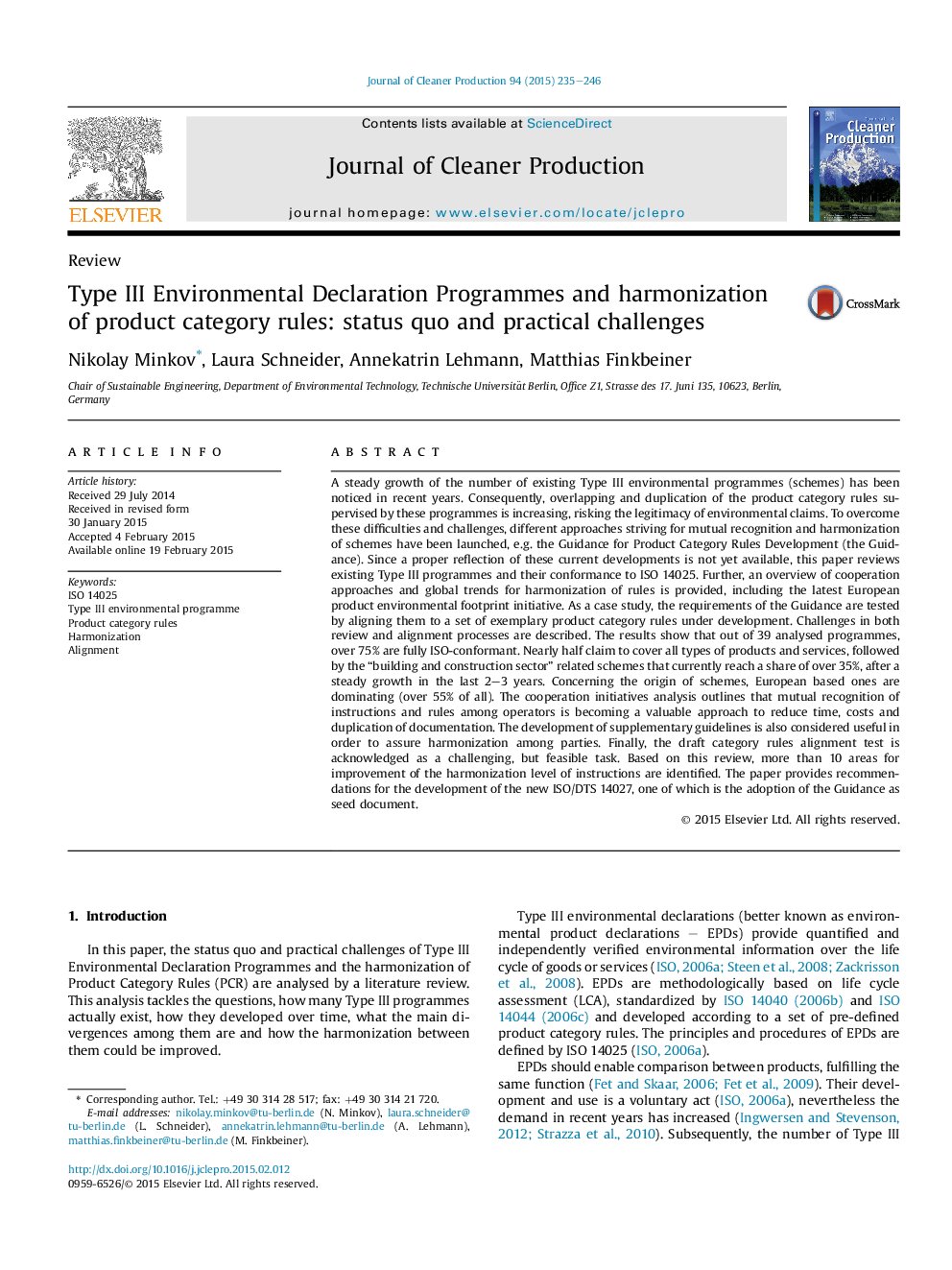| Article ID | Journal | Published Year | Pages | File Type |
|---|---|---|---|---|
| 8104638 | Journal of Cleaner Production | 2015 | 12 Pages |
Abstract
A steady growth of the number of existing Type III environmental programmes (schemes) has been noticed in recent years. Consequently, overlapping and duplication of the product category rules supervised by these programmes is increasing, risking the legitimacy of environmental claims. To overcome these difficulties and challenges, different approaches striving for mutual recognition and harmonization of schemes have been launched, e.g. the Guidance for Product Category Rules Development (the Guidance). Since a proper reflection of these current developments is not yet available, this paper reviews existing Type III programmes and their conformance to ISO 14025. Further, an overview of cooperation approaches and global trends for harmonization of rules is provided, including the latest European product environmental footprint initiative. As a case study, the requirements of the Guidance are tested by aligning them to a set of exemplary product category rules under development. Challenges in both review and alignment processes are described. The results show that out of 39 analysed programmes, over 75% are fully ISO-conformant. Nearly half claim to cover all types of products and services, followed by the “building and construction sector” related schemes that currently reach a share of over 35%, after a steady growth in the last 2-3 years. Concerning the origin of schemes, European based ones are dominating (over 55% of all). The cooperation initiatives analysis outlines that mutual recognition of instructions and rules among operators is becoming a valuable approach to reduce time, costs and duplication of documentation. The development of supplementary guidelines is also considered useful in order to assure harmonization among parties. Finally, the draft category rules alignment test is acknowledged as a challenging, but feasible task. Based on this review, more than 10 areas for improvement of the harmonization level of instructions are identified. The paper provides recommendations for the development of the new ISO/DTS 14027, one of which is the adoption of the Guidance as seed document.
Related Topics
Physical Sciences and Engineering
Energy
Renewable Energy, Sustainability and the Environment
Authors
Nikolay Minkov, Laura Schneider, Annekatrin Lehmann, Matthias Finkbeiner,
